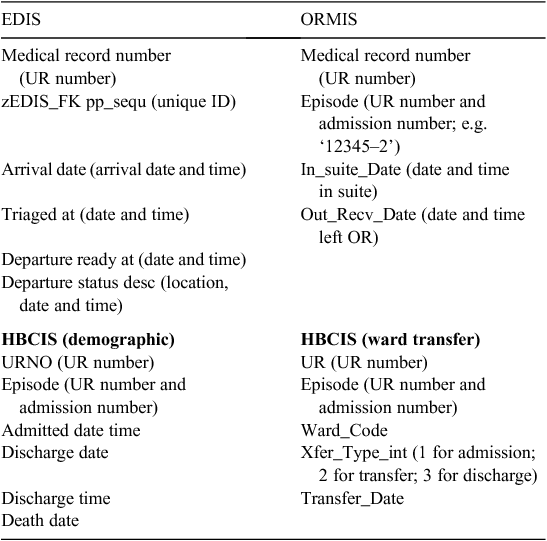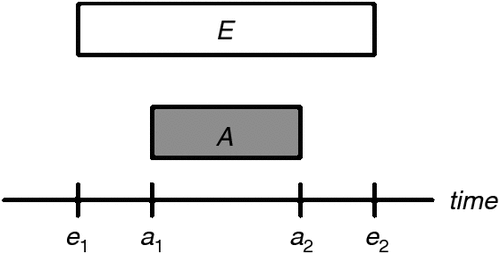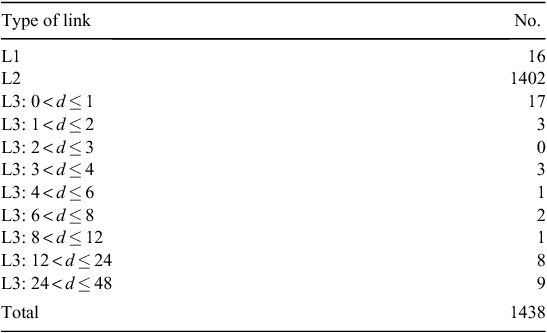Tracking the patient journey by combining multiple hospital database systems
Andy Wong A , Erhan Kozan A , Michael Sinnott B D , Lyndall Spencer C E and Robert Eley B DA Decision Science, Queensland University of Technology, Garden Point Campus, 2 George Street, Brisbane, Qld 4001, Australia. Email: a3.wong@qut.edu.au; e.kozan@qut.edu.au
B Emergency Department, Princess Alexandra Hospital, 199 Ipswich Road, Woolloongabba, Qld 4102, Australia. Email: Michael_Sinnott@health.qld.gov.au; r.eley@uq.edu.au
C Nurse Practice and Development Unit, Princess Alexandra Hospital, 199 Ipswich Road, Woolloongabba, Qld 4102, Australia.
D The University of Queensland, School of Medicine, Level 2, Translational Research Institute, Princess Alexandra Hospital, Woolloongabba, Qld 4102, Australia.
E Corresponding author. Email: Lyndall.Spencer@health.qld.gov.au
Australian Health Review 38(3) 332-336 https://doi.org/10.1071/AH13070
Submitted: 8 March 2013 Accepted: 4 February 2014 Published: 8 May 2014
Journal Compilation © AHHA 2014
Abstract
With new national targets for patient flow in public hospitals designed to increase efficiencies in patient care and resource use, better knowledge of events affecting length of stay will support improved bed management and scheduling of procedures. This paper presents a case study involving the integration of material from each of three databases in operation at one tertiary hospital and demonstrates it is possible to follow patient journeys from admission to discharge.
What is known about this topic? At present, patient data at one Queensland tertiary hospital are assembled in three information systems: (1) the Hospital Based Corporate Information System (HBCIS), which tracks patients from in-patient admission to discharge; (2) the Emergency Department Information System (EDIS) containing patient data from presentation to departure from the emergency department; and (3) Operation Room Management Information System (ORMIS), which records surgical operations.
What does this paper add? This paper describes how a new enquiry tool may be used to link the three hospital information systems for studying the hospital journey through different wards and/or operating theatres for both individual and groups of patients.
What are the implications for practitioners? An understanding of the patients’ journeys provides better insight into patient flow and provides the tool for research relating to access block, as well as optimising the use of physical and human resources.
Introduction
The use of information to drive improvements in safety and quality is paramount in the delivery of optimal clinical care. It is one of the three core principles for safe and high-quality care specified in the Australian Safety and Quality Framework for Health.1 The present study is about the use of information, by combining several sources to expand current and create new knowledge, to provide safe care for patients in acute hospitals. With the new National Emergency Access Target (NEAT) for patient flow designed to enhance patient care and increase efficient use of resources, better knowledge of events affecting patient length of stay will support improved bed management and scheduling of procedures.
Currently systems, even within single institutions, do not necessarily support end-to-end information flows. Many disparate administrative clinical systems operate to capture data on patients, and merging data across these systems can be difficult. This challenge is well illustrated by the study of Crilly et al.,2 which enhanced understanding of the emergency journey by linking the information systems of the ambulance service, the emergency department (ED) and hospital admission data.
The present case study comprises a report on the initial phase of a proposed project to develop, trial and implement a new patient flow measurement system entitled the Bed Unit Day (BUD).
Objectives
The primary objective of the present study was to obtain a comprehensive picture of patient journeys from the ED to the ward and/or the operating rooms by developing a methodology to enable the integration of material from each of three hospital information systems designed to record these events.
Setting
The study was conducted in a major tertiary hospital in Queensland where patient data are assembled in three separate information systems: (1) the Hospital Based Corporate Information System (HBCIS), which tracks patients from in-patient admission to discharge; (2) the Emergency Department Information System (EDIS), which contains patient data from presentation at, to departure from, the ED; and (3) the Operation Room Management Information System (ORMIS), which records patient time under the control of the hospital’s surgical teams.
These three information systems were developed independently and at different times, with different objectives and different reporting requirements in mind. It is difficult, if not impossible, to extract an integrated view of the three systems with certainty, as explained later in this paper. Consequently, at present there is no simple process to obtain a comprehensive picture of patient journeys from the ED to the wards and/or the operating rooms to discharge from hospital. Herein, we describe the development of an enquiry tool or method to enable the integration of material from each of the three established systems. In future this tool may be used to provide information for data analysis and future research into access block and patient flow.
Methodology
Patients may take one of many routes between the various departments of the hospital to obtain the care they require. For example, following an ED presentation, a patient may be admitted to an in-patient ward or to an operating room or may be discharged home. In this case study, only the immediate in-patient admission from an ED presentation is considered.
Following receipt of approval from the relevant Queensland Human Research Ethics Committee to undertake the study, data were obtained from the Data Custodians for each of the three databases for October 2010. Integration, analysis and interpretation were undertaken by the study’s research fellow (AW) in association with the project’s Steering Committee (EK, MS, LS and RE).
The methodological approach developed and adopted for this project is most clearly understood by illustration. Table 1 shows the relevant field names of the data from EDIS, HBCIS and ORMIS used in the study for the purpose of following patient journeys. A single patient is identified by the same unique record (UR) medical record number in each database. That UR number remains with a patient in perpetuity; however, an admitted patient is also given a separate admission episode number in HBCIS. In addition, each record of ED presentation entered into EDIS will have a unique ID (Unique ID) assigned. If a patient has multiple ED presentations and multiple admissions over a period of time, currently no information is readily available to indicate that a particular admission is a direct result of a particular ED presentation, thereby making it difficult to analyse the patient’s journey from ED to in-patient admission.

|
The calculated time of stay in ED, together with the time of entry into in-patient stay, are the most reliable sources linking ED presentations and immediate admissions. In EDIS, the start time (e1; see Fig. 1) of a presentation is recorded in the field ‘Arrival Date’ and the end time (e2) is recorded in the field ‘Departure Ready At’. In HBCIS, the start time (a1) of an admission is recorded by the field ‘Admit Date Time’ and the end time (a2) is recorded in the fields ‘Discharge Date’ and ‘Discharge Time’. The entry fields for ‘Ward Transfer’ in HBCIS provide further information about the ward code that has been assigned to a patient. In ORMIS, the duration in the surgical division is recorded by the fields ‘In_suite_Date’ and ‘Out_Recv_Date’.
After analysing the hospital data, the following three different types of connections between the data (L1, L2 and L3) between the recorded ED presentations and the immediate admissions are identified: (1) L1, e2 = a1 (admission starts on discharge from ED; see Fig. 1a); (2) L2, e1 < a1 < e2 < a2 (recorded duration of ED presentation overlapped with the recorded admission; see Fig. 1b); and (3) L3, e2 = a1 (time lag, d, between recorded ED presentation and the recorded admission time; see Fig. 1c).
L1 is a natural link between an ED presentation and the immediate in-patient admission; L2 indicates that a patient is admitted while still in ED under observation, or waiting for a bed. There could be many possible reasons for having link type L3, such as non-standardised ways in recording admission and departure time. The maximum time lag must be carefully chosen. If the maximum time lag is too small, many ED presentations and the immediate admissions could be excluded; if the value is too large, some non-immediate admissions could be incorrectly included (e.g. a patient is discharged home after an ED presentation for admission the next day).
A fourth link is shown in Fig. 2. This shows the duration of an admission that is within the duration of the ED presentation e1 < a1 < a2 ≤ e2, and does not indicate an in-patient admission. This may happen when the patient recovered under observation in ED and was discharged home; or, while the patient was waiting for a ward bed, the patient’s condition improved and the patient was discharged; or the patient did not wait and left. This link is not included in the results because these patients do not enter the ‘in-patient’ locations of the hospital.

|
Figure 3 shows the flow chart for inserting the field ‘Episode’ (UR number and admission number) into the sample EDIS data. With this field, the three information systems (EDIS, HBCIS and ORMIS) can be combined to illustrate the patient journey.
Results
During October 2010, the hospital had 4002 ED presentations, of which 1438 resulted in patient admission. Table 2 reveals those in-patient admissions using link types L1–L3 with a time lag up to 48 h. The number of L3 links is higher in the first hour and then the number becomes smaller by the hour. On balancing the possibility of a patient discharged home and then admitted later, the maximum time lag d for this study was taken to be 2 h.

|
By linking EDIS, ORMIS and HBCIS, the study successfully developed a method to examine the journey of all patients using information from all three systems. It also permitted a more intensive investigation into access block and the performance improvement of the hospital. As an example, Fig. 4 shows a Gantt chart of patient locations by half-hourly interval on a particular day created using Microsoft Excel (Microsoft Corporation, Redmond, WA, USA).
Validation of the data were undertaken by reviewing a subset of 50 patient records in both EDIS and HBCIS and in hard copy through chart audit, and cross-checking with the results obtained through the enquiry tool. This was undertaken by the project’s professional researchers (LS and RE), both of whom possess the requisite clinical training and expertise to accurately interpret the material. In the few instances where discrepancies were found, these could be attributed to data entry error. Consequently, the authors are confident that the quality is high and that the method provides rigorous results.
Constraints
There were two major constraints to overcome. The first was obtaining the data and the second confirming the quality of those data. The three management systems were developed independently and at different times, with different objectives, and they operate on different platforms. Obtaining even one month’s data was a time-consuming exercise dependant on the goodwill of expert colleagues who were willing to adjust their own duties to accomplish the request. Although the researchers were grateful for the support of their colleagues, delays were frustrating. Because the study depended on data collected by others, challenges such as the management of missing data had to be met.
Discussion
The development of a rational technique to follow patients throughout their hospital journeys was the focus of the present study as a primary step to understanding patient flow and the analysis of phenomena contributing to access block. Access block contributes to over-crowding in the ED and many other impediments to free-flowing patient journeys. Delayed procedures almost inevitably result in increased patient morbidity and extended length of stay, as demonstrated by Richardson3 and Geelhoed and de Klerk.4 Furthermore, excess resource capacity, such as beds, unused equipment and over-rostering of staff, place a substantial financial burden on the healthcare system. Thus, the efficient use of beds and other resources will result in considerable savings.
The present study supports our future work in the development, trial and implementation of a new measurement system, namely BUD. At present, bed unit managers use a simple model of current bed availability and anticipated departure to allocate a bed for each patient for the current day. It is their primary priority. By combining the three information system data sources for the first time, the BUD will be a multifaceted tool that examines the bed requirements for all patients, elective and emergency, not only for the day of their admission, but also for the predicted duration of their stay.
Conclusion
The authors observed earlier that the hospital recording systems are frequently disjointed, sitting on different platforms and, historically, unable to be combined. In the present study, a tool was developed to link EDIS, HBCIS and ORMIS using the recorded duration of patients’ stay from the three systems. With this tool, immediate in-patient admissions following an ED presentation can be identified for further study into patient flow and access block. It is intended that, once refined, the implementation of this tool will lead to a system that links data in real time and provides the results to patient movement managers to aid their planning and occupancy decisions.
Competing interests
The authors declare they have no competing interests.
Acknowledgements
The authors acknowledge, with gratitude, the Princess Alexandra Hospital Research Foundation and Private Practice Trust Fund for the grant that funded this study. The authors also thank members of the HBCIS, EDIS and ORMIS staff who obtained the data used in the execution of this project.
References
[1] Australian Commission on Safety and Quality in Health Care (ACSQHC). Australian safety and quality framework for health care. Sydney: ACSQHC; 2010.[2] Crilly J, O’Dwyer J, O’Dwyer M, Lind J, Peters J, Tippett V, et al Linking ambulance, emergency department and hospital admissions data: understanding the emergency journey. Med J Aust 2011; 194 S34–7.
| 21401486PubMed |
[3] Richardson DB. Increase in patient mortality at 10 days associated with emergency department overcrowding. Med J Aust 2006; 184 213–16.
| 16515430PubMed |
[4] Geelhoed GC, de Klerk NH. Emergency department overcrowding, morality and the 4 hours rule in Western Australia. Med J Aust 2012; 196 369–74.





